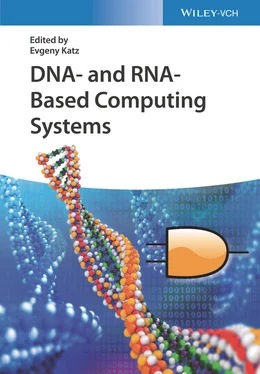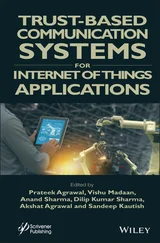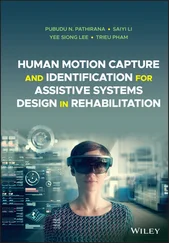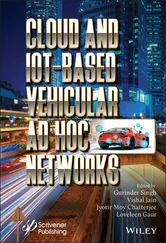1 Cover
2 DNA- and RNA-Based Computing Systems DNA- and RNA-Based Computing Systems Edited by Evgeny Katz
3 Copyright Editor Dr. Evgeny Katz Clarkson University Department of Chemistry Clarkson Avenue 8 NY United States All books published by Wiley‐VCH are carefully produced. Nevertheless, authors, editors, and publisher do not warrant the information contained in these books, including this book, to be free of errors. Readers are advised to keep in mind that statements, data, illustrations, procedural details or other items may inadvertently be inaccurate. Library of Congress Card No.: applied for British Library Cataloguing‐in‐Publication Data A catalogue record for this book is available from the British Library. Bibliographic information published by the Deutsche Nationalbibliothek The Deutsche Nationalbibliothek lists this publication in the Deutsche Nationalbibliografie; detailed bibliographic data are available on the Internet at < http://dnb.d-nb.de >. © 2021 WILEY‐VCH GmbH, Boschstr. 12, 69469 Weinheim, Germany All rights reserved (including those of translation into other languages). No part of this book may be reproduced in any form – by photoprinting, microfilm, or any other means – nor transmitted or translated into a machine language without written permission from the publishers. Registered names, trademarks, etc. used in this book, even when not specifically marked as such, are not to be considered unprotected by law. Print ISBN: 978‐3‐527‐34720‐9 ePDF ISBN: 978‐3‐527‐82540‐0 ePub ISBN: 978‐3‐527‐82541‐7 oBook ISBN: 978‐3‐527‐82542‐4 Cover Design Adam‐Design, Weinheim, Germany
4 Preface References
5 1 DNA Computing: Origination, Motivation, and Goals – Illustrated Introduction 1.1 Motivation and Applications 1.2 DNA‐ and RNA‐Based Biocomputing Systems in Progress 1.3 DNA‐Based Information Storage Systems 1.4 Short Conclusions and Comments on the Book References
6 2 DNA Computing: Methodologies and Challenges 2.1 Introduction to DNA Computing Methodologies 2.2 Key Developments in DNA Computing 2.3 Challenges Acknowledgment References
7 3 DNA Computing and Circuits 3.1 From Theory to DNA Implementations 3.2 Application‐Specific DNA Circuits Acknowledgments References
8 4 Connecting DNA Logic Gates in Computational Circuits 4.1 DNA Logic Gates in the Context of Molecular Computation 4.2 Connecting Deoxyribozyme Logic Gates 4.3 Connecting Gates Based on DNA Strand Displacement 4.4 Logic Gates Connected Via DNA Four‐Way Junction (4WJ) 4.5 Conclusion References Note
9 5 Development of Logic Gate Nanodevices from Fluorogenic RNA Aptamers 5.1 Nucleic Acid: The Material of Choice for Nanotechnology 5.2 RNA Aptamers are Modular and Programmable Biosensing Units 5.3 Construction of RNA Nanoparticles with Integrated Logic Gate Operations Using Light‐Up Aptamers 5.4 Conclusion Acknowledgments References
10 6 Programming Molecular Circuitry and Intracellular Computing with Framework Nucleic Acids 6.1 Framework Nucleic Acids 6.2 A Toolbox for Biomolecular Engineering of Living Systems 6.3 Targeted Applications 6.4 Nucleic Acid Nanotechnology‐Enabled Computing Kernel 6.5 I/O and Human–Computer Interfacing 6.6 Information Storage 6.7 Perspectives 6.8 Conclusion References
11 7 Engineering DNA Switches for DNA Computing Applications 7.1 Introduction 7.2 Selecting Recognition Element Based on Input 7.3 Engineering Switching Mechanisms 7.4 Engineering Logic Output Function Response 7.5 Optimizing Switch Response 7.6 Perspective Acknowledgments References
12 8 Fluorescent Signal Design in DNA Logic Circuits 8.1 Basic Signal Generation Strategies Based on DNA Structures 8.2 Designs for Constructing Multi‐output Signals 8.3 Summary and Outlook References
13 9 Nontraditional Luminescent and Quenching Materials for Nucleic Acid‐Based Molecular Photonic Logic 9.1 Introduction 9.2 DNA Molecular Photonic Logic Gates 9.3 Nontraditional Luminescent Materials 9.4 Semiconductor “Quantum Dot” Nanocrystals 9.5 Lanthanide‐Based Materials 9.6 Gold Nanoparticles 9.7 Metal Nanoclusters 9.8 Carbon Nanomaterials 9.9 Conjugated Polymers 9.10 Conclusions and Perspective References
14 10 Programming Spatiotemporal Patterns with DNA‐Based Circuits 10.1 Introduction 10.2 Experimental Implementation of DNA Analog Circuits 10.3 Time‐Dependent Spatial Patterns 10.4 Steady‐State Spatial Patterns 10.5 Conclusion and Perspectives Acknowledgments References
15 11 Computing Without Computing: DNA Version 11.1 Introduction 11.2 Computing Without Computing – Quantum Version: A Brief Reminder 11.3 Computing Without Computing – Version Involving Acausal Processes: A Reminder 11.4 Computing Without Computing: – DNA Version 11.5 DNA Computing Without Computing Is Somewhat Less Powerful than Traditional DNA Computing: A Proof 11.6 First Related Result: Security Is More Difficult to Achieve than Privacy 11.7 Second Related Result: Data Storage Is More Difficult than Data Transmission Acknowledgments References
16 12 DNA Computing: Versatile Logic Circuits and Innovative Bio‐applications 12.1 Definition, Logical Principle, and Classification of DNA Computing 12.2 Advanced Arithmetic DNA Logic Devices 12.3 Advanced Non‐arithmetic DNA Logic Devices 12.4 Concatenated Logic Circuits 12.5 Innovative Multifunctional DNA Logic Library 12.6 Intelligent Bio‐applications 12.7 Prospects Acknowledgment References
17 13 Nucleic Acid‐Based Computing in Living Cells Using Strand Displacement Processes 13.1 Nucleic Acid Strand Displacement 13.2 Synthetic Riboregulators 13.3 Combining Strand Displacement and CRISPR Mechanisms 13.4 Computing Via Nucleic Acid Strand Displacement in Mammalian Cells 13.5 Outlook References
18 14 Strand Displacement in DNA‐Based Nanodevices and Logic 14.1 An Introduction to Strand Displacement Reactions 14.2 Dynamic Reconfiguration of Structural Devices 14.3 Stepped and Autonomous DNA Walkers 14.4 Early Breakthroughs in DNA Computing 14.5 DNA‐Based Molecular Logic 14.6 Future Prospects for Strand Displacement‐Based Devices Acknowledgment References
19 15 Development and Application of Catalytic DNA in Nanoscale Robotics 15.1 Introduction 15.2 Brief History of DNAzymes 15.3 Experimental Implementations 15.4 DNAzyme Walkers 15.5 Statistical Mechanics and Simulation 15.6 Conclusions References
20 16 DNA Origami Transformers 16.1 Introduction 16.2 Design 16.3 Experimental Demonstrations 16.4 Applications 16.5 Conclusion Acknowledgment References
21 17 Nanopore Decoding for DNA Computing 17.1 Introduction 17.2 Application of Nanopore Technology for Rapid and Label‐Free Decoding 17.3 Application of Nanopore Decoding in Medical Diagnosis 17.4 Conclusions References
22 18 An Overview of DNA‐Based Digital Data Storage 18.1 Introduction 18.2 Components of a DNA Storage System 18.3 Conclusions and Outlook Acknowledgments References
23 19 Interfacing Enzyme‐Based and DNA‐Based Computing Systems: From Simple Boolean Logic to Sophisticated Reversible Logic Systems 19.1 Interfacing Enzyme‐Based and DNA‐Based Computing Systems is a Challenging Goal: Motivations and Approaches 19.2 Bioelectronic Interface Transducing Logically Processed Signals from an Enzymatic System to a DNA System 19.3 The Bioelectronic Interface Connecting Enzyme‐Based Reversible Logic Gates and DNA‐Based Reversible Logic Gates: Realization in a Flow Device 19.4 Enzyme‐Based Fredkin Gate Processing Biomolecular Signals Prior to the Bioelectronic Interface 19.5 Reversible DNA‐Based Feynman Gate Activated by Signals Produced by the Enzyme‐Based Fredkin Gate 19.6 Conclusions and Perspectives 19.A Appendix References
24 20 Conclusions and Perspectives: Further Research Directions and Possible Applications
Читать дальше












